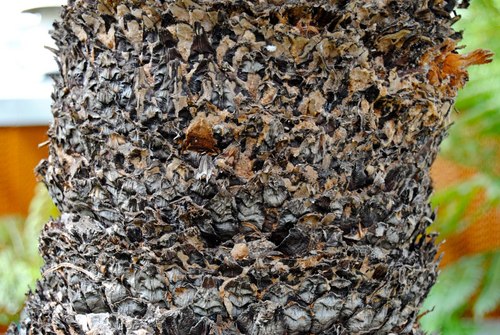King Sago Palm : Reproduction
Like all cycads, the king sago palm is a gymnosperm, reproducing with “naked seeds”. The king sago is dioecious, meaning it has separate male and female individuals. The best way to tell the two apart is by their cone, which sits in the middle of the crown of leaves. A male cone is very pointed, much like a traditional pine cone. A female cone, on the other hand, is much more spherical and globular. Both are yellow in color and contain vital reproductive parts. Like many plants, the king sago palm uses insects in order to transport pollen. Because they do not produce flowers, king sago palms use beetle and weevil species to pollinate. They do not offer nectar, but the actual cone itself as a food source for the insects. The male cone is either consumed or even has eggs laid in it, where they pick up pollen. Female plants give off an attractive scent, but the female cone is not as tasty as the male cone. The insects land on the female cone looking for food, leaving pollen as they go, but leave once they realize the cone is not a very good food source. The pollen can then fertilize the unharmed eggs.

